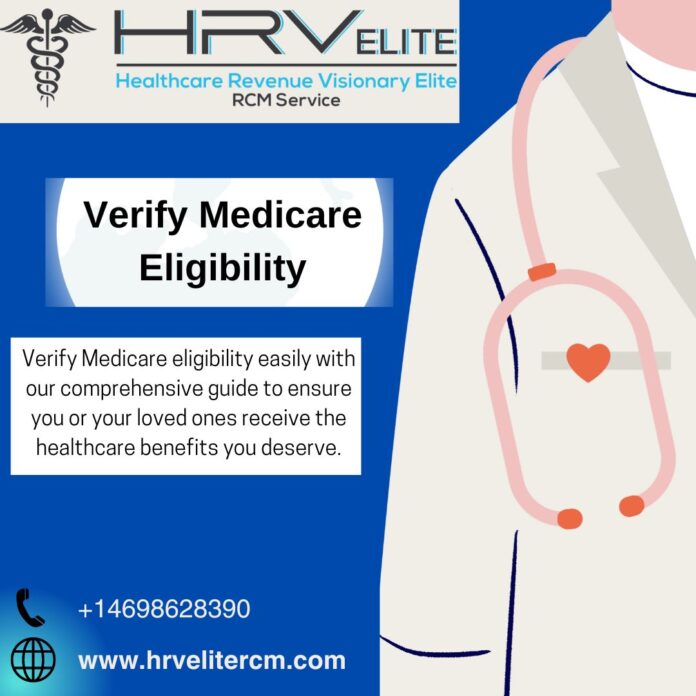Navigating the intricacies of Medicare can be challenging, especially when it comes to verifying eligibility. Whether you’re a healthcare provider, an insurance agent, or an individual planning for healthcare needs, understanding the eligibility criteria and verification process is crucial. This guide aims to demystify the process, providing clear steps and essential information to ensure you can verify Medicare eligibility efficiently and accurately.
Understanding Medicare Eligibility
Medicare is a federal health insurance program primarily for people aged 65 and older, though it also covers certain younger individuals with disabilities and those with End-Stage Renal Disease (permanent kidney failure requiring dialysis or a transplant). Eligibility for Medicare is typically based on the following criteria:
- Age: Most individuals become eligible for Medicare when they turn 65. If you or your spouse have worked and paid Medicare taxes for at least 10 years (40 quarters), you will likely qualify for premium-free Part A.
- Disability: Individuals under 65 can qualify for Medicare if they have been receiving Social Security Disability Insurance (SSDI) for 24 months.
- Specific Health Conditions: Those diagnosed with End-Stage Renal Disease (ESRD) or Amyotrophic Lateral Sclerosis (ALS, also known as Lou Gehrig’s disease) are eligible for Medicare regardless of age.
Steps to Verify Medicare Eligibility
- Gather Necessary Information: To verify eligibility, you’ll need some basic information about the individual, including their full name, date of birth, and Social Security Number (SSN). For providers and agents, having the Medicare Beneficiary Identifier (MBI) is also helpful.
- Use Online Tools: The Centers for Medicare & Medicaid Services (CMS) offers several online tools to assist with eligibility verification:
- Medicare Administrative Contractors (MACs): MACs provide online portals where providers can check a patient’s eligibility. Each region has its designated MAC, which can be found on the CMS website.
- CMS.gov: The official CMS website offers a wealth of resources and tools for verifying eligibility. The Medicare Coverage Database (MCD) and the CMS’ MyMedicare.gov portal are particularly useful.
- Electronic Data Interchange (EDI): Providers can use EDI to exchange information electronically, including verifying Medicare eligibility in real-time.
- Contact Medicare Directly: For individuals, contacting Medicare directly can provide a straightforward verification process.
- Check with Social Security: Since Social Security handles Medicare eligibility determination for most people, you can verify eligibility by visiting.
Key Considerations
- Enrollment Periods: It’s important to be aware of the different enrollment periods for Medicare. Initial Enrollment Period (IEP) begins three months before the month you turn 65 and lasts for seven months. Special Enrollment Periods (SEPs) and General Enrollment Periods (GEP) also apply under specific circumstances.
- Medicare Part A and Part B: Verify whether the individual qualifies for premium-free Part A based on their work history. For Part B, check if they are required to pay a premium and understand the late enrollment penalties if they miss their initial enrollment period.
- Medicare Advantage (Part C) and Prescription Drug Coverage (Part D): Ensure that the individual understands their eligibility for Medicare Advantage plans and Part D prescription drug plans, as these require separate enrollment.
Common Challenges and Solutions
- Incomplete Information: Ensure all personal information is accurate and up-to-date to avoid delays in verification.
- Understanding Coverage: Medicare eligibility does not guarantee coverage for all services. Verify specific coverage details to avoid unexpected costs.
- Keeping Records: Maintain detailed records of all eligibility checks and communications with Medicare or Social Security to streamline future verification processes.
- Verifying Medicare eligibility is a crucial step in ensuring access to essential healthcare benefits. Individuals typically become eligible for Medicare at age 65, or earlier if they have certain disabilities or health conditions like End-Stage Renal Disease (ESRD) or Amyotrophic Lateral Sclerosis (ALS). To verify eligibility, gather necessary personal information and use resources like the CMS website, Medicare Administrative Contractors (MACs), or contact Medicare directly. Understanding the eligibility criteria and using available tools ensures that individuals can effectively access their Medicare benefits without delays or complications. Proper verification helps avoid unexpected costs and guarantees timely healthcare coverage.
Conclusion
Verify Medicare eligibility is a crucial step in ensuring individuals receive the healthcare benefits they are entitled to. By understanding the eligibility criteria, using available tools, and being aware of enrollment periods and coverage details, you can navigate the verification process with confidence. Whether you are verifying your own eligibility or assisting someone else, this essential guide provides the foundation needed for a smooth and efficient experience.

